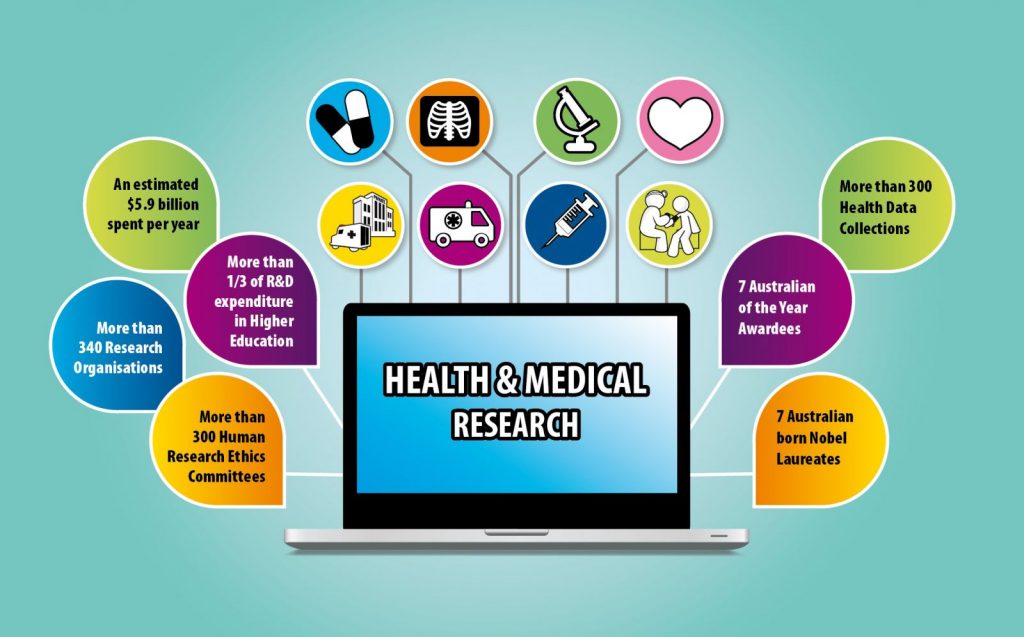Talk to most Australian health and medical researchers and they’ll tell you that data is vitally important to their work. Data can help us track population health trends and further our understanding of disease causation. It might be used to target government spending more effectively, or identify instances of low value medical care.[1] The right kinds of data can even allow us to survey pharmaceutical drugs once they’re released onto the market, and tell us what kinds of side effects these drugs are producing – or if they’re even working at all.
Despite this, data remains highly inaccessible in Australian health and medical research (HMR), and it’s no secret that researchers face a wide range of barriers when they attempt to gain access to the kinds of data they need to carry out studies and projects. Thus, over the next few months, the Capital Markets Cooperative Research Centre (CMCRC) will be undertaking a comprehensive review of the Australian HMR data landscape as part of Volume Two of our Australian Health Data Series.
The first volume of Flying Blind – which can be found here – focused on how consumer health data is underutilised across the entire health system. In Volume Two we’ll trace the difficulties that researchers face at each stage of their research journey before calling on government, researchers, private sector operators and community members to collaborate in the planning and implementation of a transformative HMR environment.
The Barriers
The fact that Australian health and medical researchers could find it so hard to access data is somewhat surprising – Australia spends a lot on HMR (according to one estimate, $5.9 billion in 2013-4), and we’re known internationally as innovative, world class researchers who’ve come up with breakthroughs such as cochlear implants and helping develop penicillin. So, what seems to be the problem?
The first place we might turn to is technology. Yet, a recent OECD report declared that Australian HMR data is in a state of high technical readiness for research and linkage, but very low data governance readiness. While Australian data collections are far from perfect, Australia holds enough rich, high quality public data sets to be of incredible benefit to researchers. Likewise, Australia’s technology infrastructure is easily capable of linking different data sets and employing effective privacy protections to ensure that individual identities are protected.
Rather, it seems that the majority of these challenges stem from the complexities existing at all levels of Australia’s research landscape. Take, for example, the difficulties associated with the research application process. In order to receive the data they need, researchers are forced to spend substantial amounts of time trying to find the location of the different data sets they’d like to use. They then need to apply for a time-restricted grant from one of many different funders, before going on to engage in lengthy negotiations with data custodians and data linkage units – who are often extremely cautious in allowing researchers to access their data sets.
At the same time, researchers also have to navigate complex legislation surrounding privacy and data use, as well as a plethora of different ethics committees. In turn, these committees have to apply fragmented sets of rules, regulations and legislation to any ethics application they receive. More often than not, these obstacles result in great delays for researchers; just as importantly, they consume substantial amounts of taxpayer money.
Australian Health and Medical Research

Better Framework, Better Research, Better Outcomes
These are just some of the issues affecting research in Australia, and we’ll be examining many more. Untangling these problems and creating a new, more efficient HMR data usage landscape will bring great benefits to Australian researchers and Australians as a whole. Research will be faster, cheaper and far more effective, and better and more timely research should lead to better health and medical outcomes for all Australians.
Over the course of this blog, we’ll be previewing some of the work that’s going into Volume Two, and, hopefully, helping stimulate public conversation. We’re going to cover a whole range of issues in Australia’s research ecosystem and look at some best practice examples overseas. After this, we’ll produce some recommendations that can help inform the creation of a new data governance framework in Australia – one able to maximise Australian research capacity and productivity, and in the process, ensure that all Australians benefit from a state-of-the-art approach to HMR data management.
We look forward to your joining us on this journey.
[1] Low value care practises are tests, procedures and interventions that are overused, inappropriate or of limited effectiveness – and in some cases potentially harmful. Jason Soon et al, ‘Identifying low-value care: the Royal Australasian College of Physicians’ EVOLVE initiative’. MJA, 2016, 204, No. 5, pp. 180-181.



















